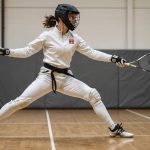Understanding the Importance of Grip in Judo
Grip strength in judo is a crucial element that distinguishes successful athletes. A firm grip can make the difference in controlling an opponent’s movement, giving the athlete a strategic advantage. The significance of grip is highlighted during matches where the ability to maintain or break an opponent’s grip can shift the momentum.
Connection between grip strength and overall performance is evident in the execution of judo techniques. A powerful grip enhances an athlete’s ability to perform throws and holds, ensuring a more effective application of techniques. Thus, athletes should prioritise developing their grip as part of their performance enhancement strategy.
In parallel : Elevate your pole vault performance: how core stability drives athlete success
Judo techniques often require specific grips depending on the situation, making it essential to master various gripping methods. Common techniques include lapel grips, sleeve grips, and over-the-back grips. Each has its strategic use during a match, impacting the athlete’s control and balance. By diversifying grip training, judokas can improve their adaptability and effectiveness in different match scenarios.
For judo practitioners, understanding and optimising grip strength should be integral to their training regime to achieve peak performance. As such, judo athletes must continually refine their grip techniques to ensure their success in competitive environments.
Also read : Top Sun Defense Tactics for Pro Surfers to Protect Their Skin During Competitions
Proven Grip Techniques for Judo
Mastering grip techniques is of paramount importance for judo practitioners aiming to enhance athlete performance. Various grip types offer distinct advantages depending on the match situation, making grip adaptability a critical skill. Among the grip techniques frequently employed are the lapel and sleeve grips, known for their versatility in gaining control during throws and hold-downs. Another favoured technique is the over-the-back grip, which provides a strategic advantage in specific exchanges by enhancing balance and leverage.
Grip Types and Their Applications
Understanding the situational effectiveness of each grip type is crucial for judokas. For instance, lapel grips are advantageous early in a match to establish dominance, while sleeve grips offer control as the contest progresses. Transitioning effectively between grip techniques can create offensive opportunities and surprise opponents. This adaptability requires judokas to anticipate changes in an opponent’s stance and react swiftly, amplifying their strategic options during bouts.
Key Exercises to Develop Grip Strength
A well-rounded grip training regimen is essential for improving strength. Incorporating exercises like gripping resistance bands and lifting weights can help build the endurance and power necessary to execute firm and resilient grips. Judokas should aim to integrate these exercises into their routine to support overall performance and technique execution.
Expert Insights on Grip Training
Understanding expert tips in grip training can significantly boost an athlete’s performance. Through interviews with seasoned judo coaches, we learn that mastering grip strength is not merely about raw power but also about technique and timing. Coaches stress the need for tailored judo coaching to address individual athlete struggles, such as maintaining grip under fatigue.
Many athletes face challenges with training efficacy, often due to improper form or technique adjustments. A common struggle noted by experts is the inability to transition between grip techniques smoothly during a match. This gap can be bridged with specific drills that mimic match scenarios, increasing adaptability and response time.
Recommendations often include modifications based on an athlete’s skill level. Beginners might focus on basic grip exercises, while advanced practitioners incorporate dynamic drills to refine grip transitions. Emphasis is placed on consistent practice under expert guidance to ensure techniques are applied correctly, maximising grip potential and reducing the risk of injury. By integrating these insights from experienced coaches, judokas can enhance their training regimen effectively.
Integrating Grip Techniques into Training Routines
Incorporating grip techniques into judo training routines is essential for skill development. A well-structured daily regimen focuses on harmonizing grip training with overall judo practice, ensuring that practitioners enhance performance without neglecting other vital skills. Monitoring progress helps adjust these routines to maintain an athlete’s training efficacy.
Daily Training Regimen
Training routines should include exercises like weight lifting and resistance band drills, scheduled to complement technique and endurance workouts. This balance prevents overtraining and facilitates comprehensive athlete development. Implementing these methods consistently can significantly improve grip strength while maintaining a well-rounded approach to judo conditioning.
Overcoming Common Grip Issues
Judokas often face challenges like grip fatigue or reduced efficacy during matches. Preventing these issues involves strategic recovery periods and targeted exercises designed to reinforce hand strength and endurance. Additionally, emphasis on hand care and recovery practices helps sustain grip performance over time, thereby supporting overall athlete performance.
Integrating these strategies into training ensures a holistic approach to judo, catering not only to the advancement of grip strength but also to maintaining the structural integrity and efficiency of the entire athletic regime. An adaptable routine is key for continued improvement and competitive success.
Visual and Interactive Learning Tools
Integrating visual aids into your judo training can significantly enhance understanding and retention of grip techniques. Training videos and demonstrations serve as valuable resources for visual learners, providing a clear depiction of the mechanics behind various grips. By visually observing these techniques in action, practitioners can grasp nuances that may be overlooked in text descriptions.
Resources for Grip Technique Videos
Access to high-quality training videos is abundant online, offering detailed demonstrations by experienced judo athletes. These videos can help illustrate the correct application of grips in different scenarios, aiding in the mastery of techniques. It’s crucial to choose videos that show slow-motion replays and multiple angles for complete comprehension.
Benefits and Role of Visual Aids
Educational resources that utilize visual aids effectively highlight the intricacies of grip mechanics. By pairing visual aids with practical drills, judo practitioners can bridge the gap between theory and practice. Not only do these resources reinforce learning, but they also provide a platform for self-assessment, allowing athletes to identify and improve their grip technique proficiency based on observed examples.




